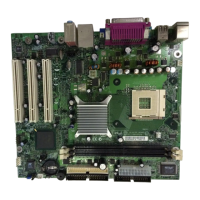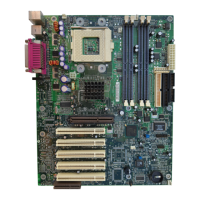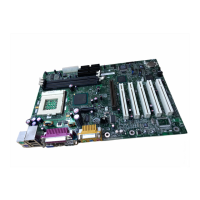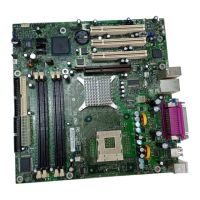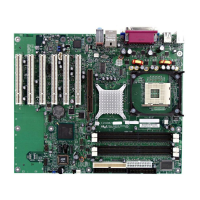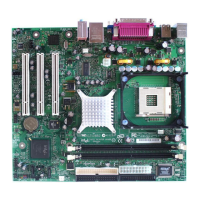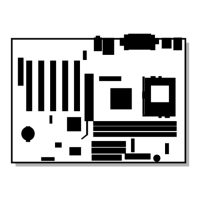Intel Desktop Board D845PEBT2 Technical Product Specification
106
4.4.4.1 Primary/Secondary IDE Master/Slave Submenus
To access these submenus, select Advanced on the menu bar, then IDE Configuration, and then the
master or slave to be configured.
Maintenance Main
Advanced
Security Power Boot Exit
PCI Configuration
Boot Configuration
Peripheral Configuration
IDE Configuration
Primary IDE Master
Primary IDE Slave
Secondary IDE Master
Secondary IDE Slave
Diskette Configuration
Event Log Configuration
Video Configuration
USB Configuration
Chipset Configuration
Fan Control Configuration
There are four IDE submenus: primary master, primary slave, secondary master, and secondary
slave. Table 73 shows the format of the IDE submenus. For brevity, only one example is shown.
Table 73. Primary/Secondary IDE Master/Slave Submenus
Feature Options Description
Drive Installed No options Displays the type of drive installed.
Type • Auto (default)
• User
Specifies the IDE configuration mode for IDE devices.
User allows capabilities to be changed.
Auto fills-in capabilities from ATA/ATAPI device.
Maximum Capacity No options Displays the drive capacity.
LBA Mode No options Displays whether automatic translation mode is
enabled for the hard disk.
Block Mode No options Displays whether automatic multiple sector data
transfers are enabled.
PIO Mode No options Displays the PIO mode.
Ultra DMA No options Displays the DMA mode for the drive.
Cable Detected No options Displays the type of cable connected to the IDE
interface: 40-conductor or 80-conductor (for ATA-100
peripherals).
Note: If an LS-120 drive is attached to the system, a row entitled ARMD Emulation Type will be displayed in the above
table. The BIOS will always recognize the drive as an ATAPI floppy drive. The ARMD Emulation Type should
always be set to Floppy.

